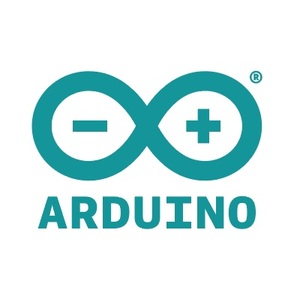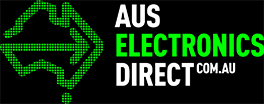Categories
- Quadcopter
- Aquaculture
- Raspberry Pi
- Video
- Components
- Gadgets
- Auto & Outdoors
- Home Automation & Security
- Audio
- Mobile Accessories
- IT
- Hobby
- Tools, Test & Mesurement
- Drones
- Drone Battery
- Spare Parts
- Remote Control Drone
- Fishing Release
- Racing Drones
- Autel EVO 2
- FPV Drone
- Mini Drone
- Drone with Camera
- Drones with FPV Display
- Beginner Drones
- GPS Drone
- Wifi FPV Drones
- Waterproof Fishing Drone
-
DJI Drones
- DJI Drone Accessories
- DJI Air 2S
- DJI Drone Spare Parts
- DJI Enterprise
- DJI FPV Racing Drone
- DJI Inspire Drone
- DJI Mavic Air
- DJI Mavic Drone
- DJI Mavic Mini
- DJI Mavic Mini 2
- DJI Spark Drone
- iFlight Racing Drones
- Mavic 2
- Mavic air 2
- Mavic Air 2 fly More combo
- Mavic Air 2 RTF
- Mavic Pro Platinum
- Phantom 3 Drone
- Phantom 4 Advance
- Phantom 4 Drone
- Phantom 4 Pro
- LED Light
- LED Lantern
- LED String / Fairy Lights
- LED Work Light
- LED Party Lights
- LED Torch
- LED Head Torch
- Household LED Light
- 12V LED Lights
-
LED Strip Lights
- Green LED Strip Light
- Power Supply
- Red Led Strip Light
- USB LED Strip Light
- Yellow LED Strip Light
- Accessory
- Blue LED Strip Light
- Neon LED Strip Light
- Rigid LED Strip Lights
- White Led Strip Light
- RGBW LED Strip Lights
- Digital LED Light Strip
- 2835 LED Strip Light Kits
- RGB LED Strip Light
- 5050 LED Light Strip Kit
- Toys
- HDMI
- HDCP Converter
- IQ4 Compatible HDMI Products
- HDMI Wall Plate Socket
- HDMI Audio Extractor
- HDMI Matrix Switcher
- HDMI Wireless Transmitter and Receiver
- HDMI Extender
- HDMI Converter
- HDMI Splitter
- HDMI Switch
- HDMI Adapter
-
HDMI Cable
- Mini Display Port
- Display Port
- Amplified HDMI Cable
- DVI Cable
- HDMI to VGA Cable
- HDMI to Micro HDMI Cable
- HDMI to DVI Cable
- HDMI to Mini HDMI
- Premium High Speed HDMI Cable with Ethernet
- High Speed HDMI Cable with Ethernet
- Hybrid Fibre Optic HDMI 2.0 Cable
- HDMI 2.0 Cable
- 8K HDMI Cable
- 4K HDMI Cable
- Hybrid Fibre Optic HDMI 2.1 Cable
- Media Player & Set Top Box
- Arduino Projects
- Power
- Battery Tester
- Transformer
- DC Power Cable & Connectors
- Solar
- Switchmode Power Supply
- AC Power Cables, Plugs and Sockets
- Powerboard and Adaptors
- Travel Adapter
- Battery Chargers
- Batteries
- USB Charger
-
GPO & Light Switch
- Electrical Accessories
- Circuit breaker
- Distribution Box
- Plug Base Socket
- Weatherproof Socket
- Black Light Switches
- Clipsal Style White
- Smart Zigbee Power Switch
- Black Power Points
- Smart Zigbee Power Socket
- Slim Series
- Alpha Series
- GPO Wall Sockets
- Power & Light Switch
- Glass Series
- Smart Wifi Power Socket
- Smart Wifi Light Switch
-
Power Adapter
- Extension Cables, Splitters and Plugs
- Reversible DC Plug
- Linear Type
- UPS
- Multi-voltage Power Adapter
- 14V DC Power Adapter
- 13.8V DC Power Adapter
- 3.3V Power Adapter
- 19V DC Power Adapter
- 7.5V DC Power Adapter
- Variable Power Supply
- USB Power Adapter
- 18V DC Power Adapter
- 48V Power Supply
- AC Power Adapter
- 24V DC Power Adapter
- 15V DC Power Adapter
- 9V DC Power Adapter
- 6V DC Power Adapter
- 5V DC Power Adapter
- 12V DC Power Adapter
Information
What is an Arduino?
Author: Aus Electronics Direct Date Posted:1 April 2016

What is an Arduino?
An Arduino is a rapid prototyping board, it is essentially a microprocessor with all the supporting circuitry and supply built in, and easy access to the pins. This – coupled with the Arduino programming language and the IDE – the programming environment – we have a system that allows us to take relatively cheap and simple modules, and create incredibly complex devices. We often do not even need to know much about the sensor or device we want to control or read with the Arduino, a lot of the work has been done already!
There is a vast collection of libraries and code you can find and use online! Just google “Arduino projects” or try something more specific. Perhaps “Arduino metal detector” or “Arduino robot”.
Tell me about the Arduino pins?
OK so you see all the headers around the board and wonder why we call them pins perhaps? The use of the term pin, is referring to the leg of the microprocessor we are accessing. Each Arduino has differing amounts but here is a rundown of what you will find on the Arduino boards:
- Digital I/O pins (Some include PWM capability)
- Digital input and output pins. You can either listen for a 0v or 5v signal coming in to these ports, or put 5v or 0v out of them. You either get a result of 1 for HIGH or 5v or 0 for LOW or 0v. There is no in-between.
- Analog Input pins
- The analog input pins can measure voltage between 0v and 5v with 1024 steps of precision. This means 0v is 0. 5v is 1024, and any voltage in between will correspond to a linear curve. This allows very precise reading of voltages on the analog pins.
- Power Supply
- Conditions incoming power from the barrel jack or USB to ensure it is clean and powers the 5v, 0v, 3.3v and other related headers.
- Crystal
- Oscillates at a set frequency to provide the timing of your Arduino.
- Reset Button
- Press this to reset the processor. This does not interrupt power to any part of the board, it is a soft reset. It uses a hardware interrupt I believe, and in no way has any effect on the power to any part of the board or chip.
- Supporting hardware
- Various components that help to provide a hassle free prototyping experience.
Useful Resources and Links:
Arduino Board Reference
Arduino Homepage
Youtube Arduino search
Buy modules, sensors and parts!


